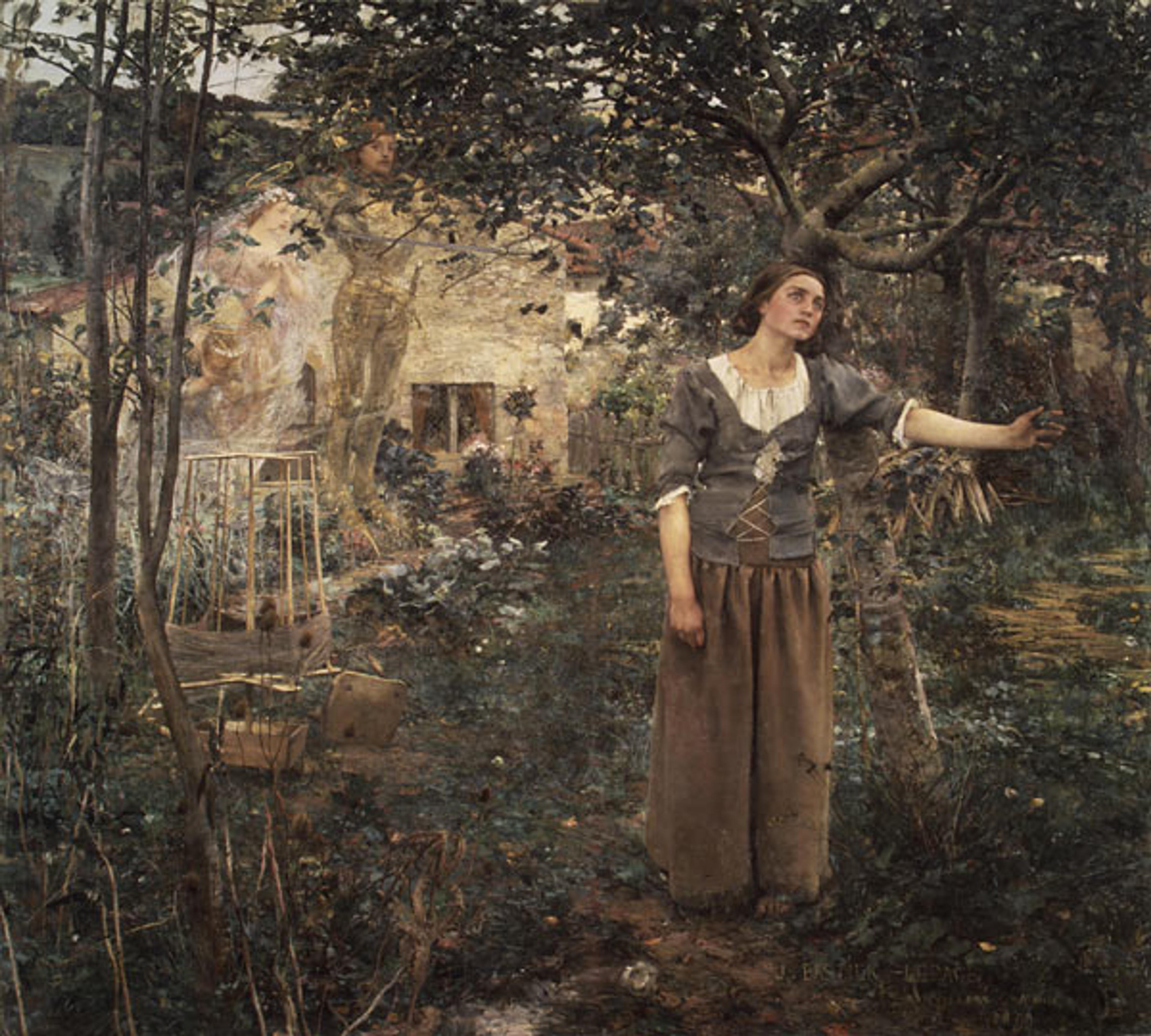
Jules Bastien–Lepage (French, 1848–1884). Joan of Arc, 1879. Oil on canvas; 100 x 110 in. (254 x 279.4 cm). The Metropolitan Museum of Art, New York, Gift of Erwin Davis, 1889 (89.21.1)
«Jules Bastien-Lepage's Joan of Arc has always intrigued me because Joan of Arc has always interested me as a historical figure, particularly because of the lack of women represented in history. Disguised as a man, Joan made her way to the besieged city of Orléans and helped to free it. After playing a role in various other military campaigns, she was captured and then burned at the stake.»
It's obvious that Bastien-Lepage's painting depicts a story, but I never knew exactly what it was. As I learned, the painting illustrates the moment when Saints Michael, Margaret, and Catherine appeared to the medieval teenager Joan of Arc, and encouraged her to fight against the English in order to protect France from domination.
Bastien-Lepage took great care in the way that he chose to depict this moment. In order to accurately depict Joan's ordinary persona, he was extremely picky about the models he chose. Her face is thought to combine the features of two young girls, while her figure is modeled after the artist's cousin Marie-Adèle Robert. He also made use of the garden of his family home in Damvillers, in the same region as Joan of Arc's village of Domrémy, to portray the setting.
According to Professor Marnin Young in his book Realism in the Age of Impressionism: Painting and the Politics of Time, the piece was widely criticized because of the dichotomy between the artist's naturalist style and the ethereal subject. French author Émile Zola felt these artistic choices "disrupted the naturalist unity of the subject." I found this very surprising because this contrast is another reason why I have always been drawn to this painting.
I now understand why this artwork has been so widely debated and revisited for centuries. Next time you're at the Met, make sure to view this painting in gallery 800.